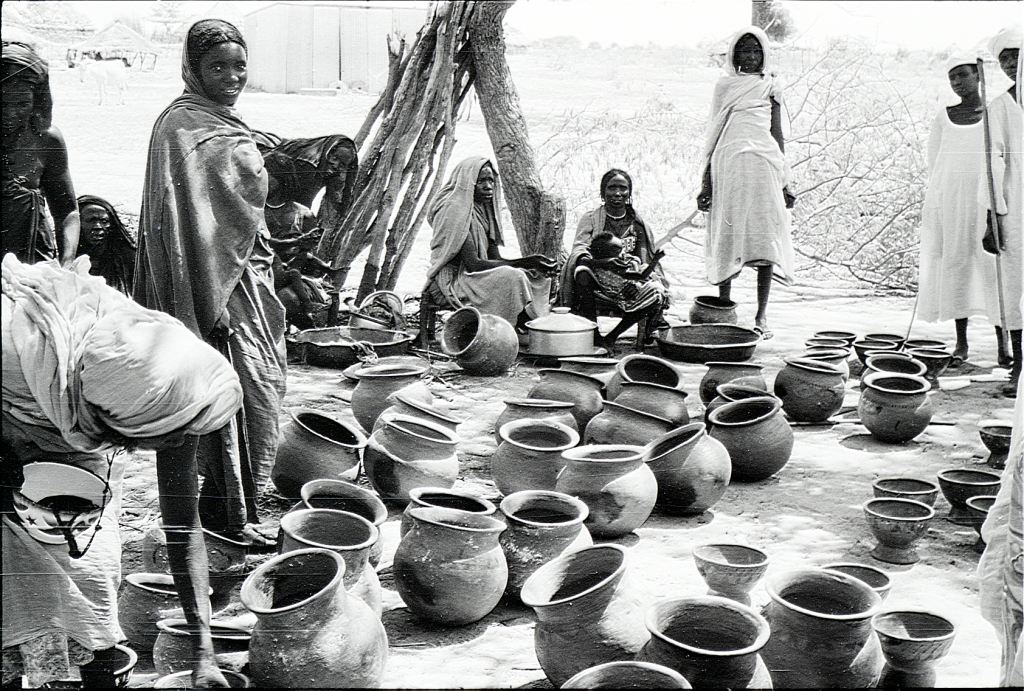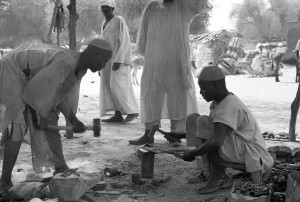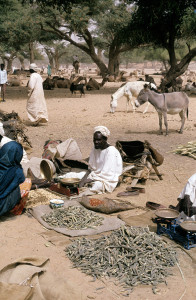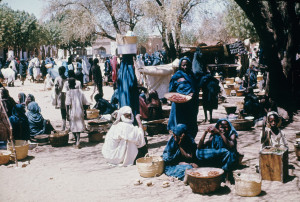Women of the “mir” caste are selling pots at the local souq (market place). Ceramic goods are associated with the stigmatized “mir” identity and are transacted at a distance from the central market place where agricultural and pastoral products are transacted.
Kutum, Northern Darfur.
Photo: Randi Haaland, 1978



